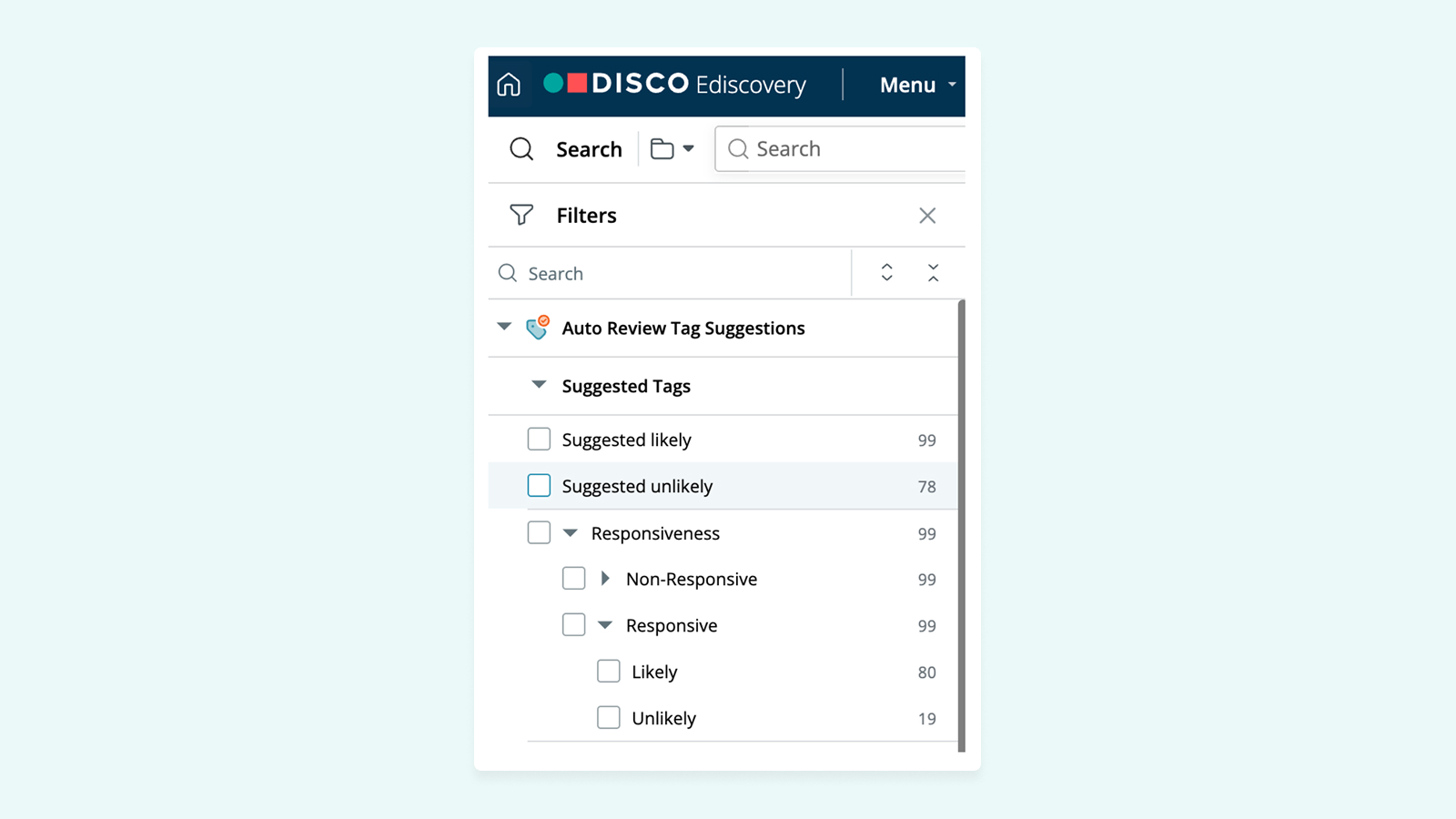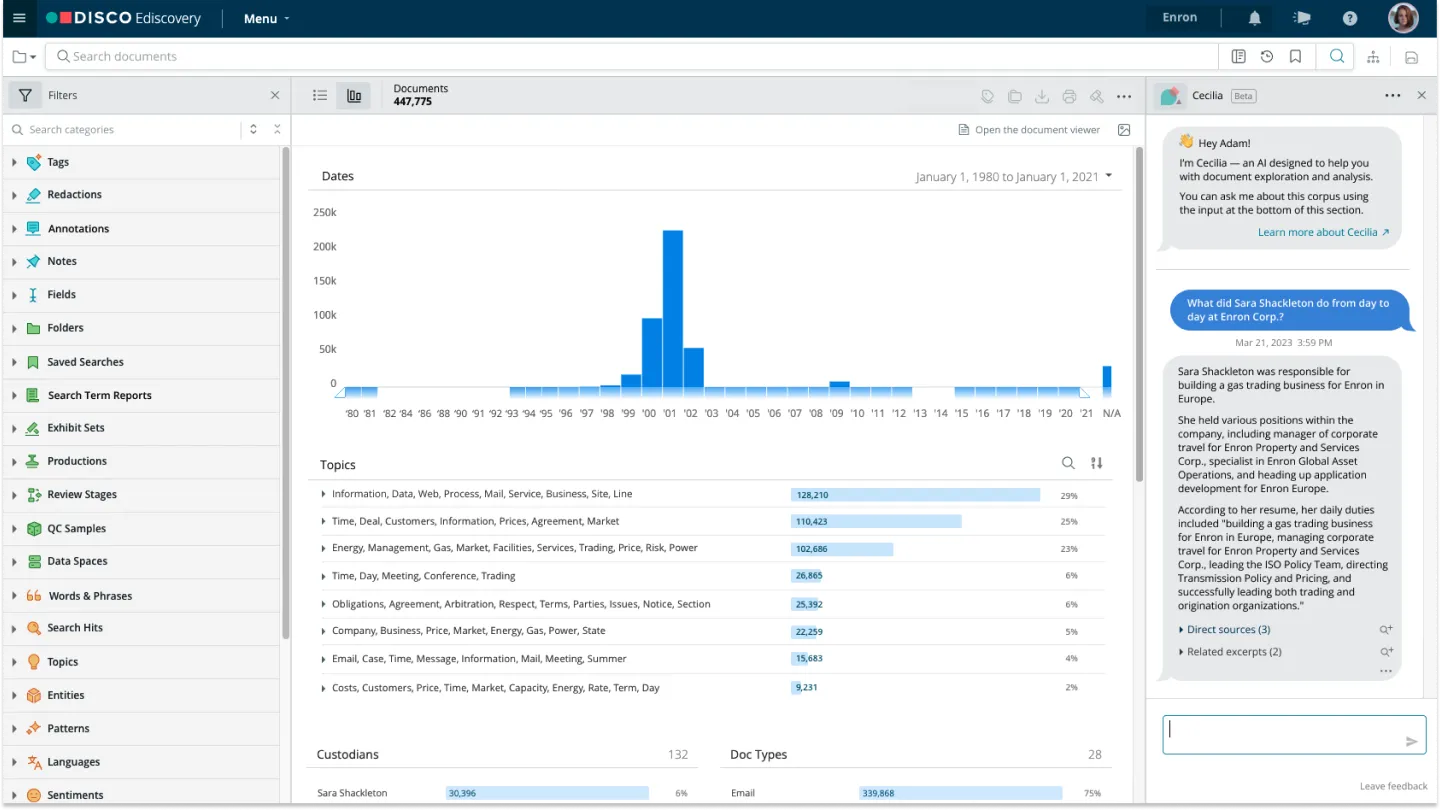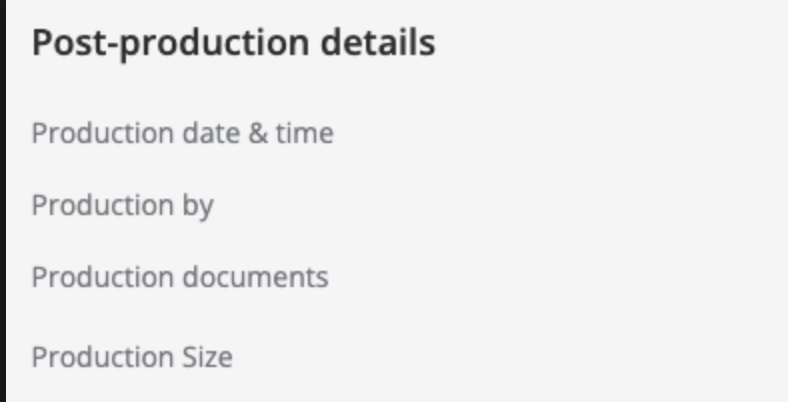⚡️ 1-Minute DISCO Download
AI is reshaping commercial litigation. Key trends include using AI assistants as on-demand research partners, generative AI for document review, and cloud platforms for case management.
📊 Key Stat: "Nearly 60% of in-house counsel say they expect their firms to use generative AI tools."
🌊 Dive Deeper: See "Generative AI-Assisted Document Review” to compare traditional TAR with new generative AI tools that complete reviews with higher accuracy in a fraction of the time – like one firm's 96,000-document review in 4 hours.
Legal tech is evolving fast, and savvy litigators are keeping pace. Nearly three-quarters of firms now rely on legal technology litigation tools, and AI-powered discovery is steadily gaining traction.
Keep reading to learn six AI-focused commercial litigation trends reshaping how disputes are managed and how they’re driving efficiency and competitive advantage in today’s litigation landscape.
Legal Technology Trend #1. Generative AI and LLM Assistants
One of the most impactful trends in commercial litigation today is the rise of generative AI and large language model (LLM) assistants. These tools are no longer experimental. They’re being embedded directly into litigation workflows to handle tasks that once consumed hours of attorney time.
LLM assistants can summarize case files, generate deposition outlines, or answer targeted questions from massive document sets in plain language. They act as an on-demand research partner, surfacing key facts, precedent, and organizing complex records in seconds. The practical effect is a shift from reactive to proactive case management: litigators can test arguments, evaluate risks, and prepare filings with unprecedented speed.
This trend matters not just because of what the tools can do, but because of how quickly they’re advancing. Each new generation of models expands the scope of tasks they can handle, making generative AI a driving force in how commercial disputes are litigated and managed.
A tool like DISCO’s Cecilia Q&A, which embeds this capability directly into the ediscovery platform, is a prime example. This AI assistant allows litigators to interrogate their document set by asking questions in plain language, such as, "What were Enron's fraudulent transactions with LJM?" Instead of requiring an attorney to manually search and read thousands of files, the assistant provides a direct, synthesized answer in seconds. (Crucially, the answer is linked to the cited documents Cecilia AI used to craft the response, allowing teams to trust, but verify.)
Legal Technology Trend #2. AI-Powered Litigation Analytics
One of the fastest-growing trends in commercial litigation is the use of AI-powered analytics to shape case strategy. Instead of relying solely on experience or instinct, litigators now have access to data sets that span decades of rulings, judicial opinions, and docket histories. Advanced tools can analyze a judge’s past decisions, reveal how long matters typically last in a jurisdiction, or show settlement patterns for opposing parties. They can even flag the tactics opposing counsel has used in prior disputes.
What makes this trend especially notable is its shift from niche to mainstream. A few years ago, analytics were considered experimental; today, they’re becoming part of standard case preparation in high-stakes matters and are moving the profession closer to a data-driven model of advocacy.
Legal Technology Trend #3. Generative AI-Assisted Document Review
Among legal tech trends for commercial litigators, few are more significant than the growing reliance on technology-assisted review (TAR) to handle massive document volumes.
Traditional first-pass review required armies of junior associates to manually code documents, a process that was both slow and inconsistent. TAR changes that equation by using machine learning to identify relevance, classify privilege, and flag sensitive material based on patterns in the data.
The significance of this trend lies in its maturity. Once viewed with skepticism, TAR is now widely accepted by courts and incorporated into discovery protocols. It allows litigators to train the system on sample sets and then apply that learning across millions of files with remarkable consistency. As commercial disputes become more data-heavy, TAR has become an accepted legal technology solution that ensures review is thorough, defensible, and aligned with the realities of modern litigation.
This trend is now rapidly evolving with the integration of generative AI. While traditional TAR predicts relevance based on coded samples, new generative AI-powered tools like DISCO's Cecilia Auto Review can handle first-pass review based on complex, plain-language instructions. Since entering the market in 2024, this approach has delivered transformative results. Cecilia Auto Review is designed to be "faster, more consistent, and more accurate" than traditional methods, achieving recall and precision rates 10-20% higher than published rates for human review. This allows legal teams to bypass months of manual work and "advance directly to the second-pass quality control stage within weeks".
The results are not just theoretical. In one case, an Am Law 100 firm used DISCO Auto Review on a sensitive matter. After working with DISCO AI consultants to optimize the prompts , the AI completed a review of 96,413 documents in just over 4 hours, achieving 89% recall and 99.5% precision. This combination of expert collaboration, "unprecedented speed," and transparent, explainable tagging decisions represents the new frontier of document review, moving far beyond the capabilities of legacy TAR.
Legal Technology Trend #4. Document Drafting and Analysis
A fast-emerging trend in commercial litigation is the use of AI to assist with drafting and analyzing key legal documents. Complex filings, disclosures, and pleadings are traditionally time-intensive and prone to human error under tight deadlines. AI tools now scan these documents for inconsistencies, risky language, or missed deadlines, giving litigators a sharper level of quality control.
What makes this trend stand out is its ability to handle both volume and nuance. Generative AI can summarize lengthy case files, draft correspondence, or suggest revisions in plain language, while large language models (LLMs) adapt to a firm’s preferred style and terminology. This isn’t about replacing attorney judgment; it’s about creating a stronger first draft and reducing the likelihood of errors.
Cecilia Deposition Summaries is a good example. It can generate a 100-page deposition summary in under five minutes, compared to human reviewers, who average only 20–25 transcript pages per hour.
Legal Technology Trend #5. Jury Analytics
Another notable trend in commercial litigation is the growing use of analytics to inform jury research and selection. Traditionally, voir dire relied heavily on attorney intuition, demographic assumptions, or limited survey data. Now, AI-powered tools aggregate information from public records, social media, and prior case histories to provide a more data-driven picture of potential jurors.
The value of this trend lies in the depth of insight it provides before a single question is asked in court. Analytics can highlight patterns in juror attitudes, reveal potential biases, and predict how individuals may respond to certain case themes. While these tools don’t replace attorney judgment, they provide an evidence-based foundation for making decisions that were once largely instinctive.
Legal Technology Trend #6. Cloud-Based Case Management
The final trend we’re seeing in commercial litigation is the adoption of cloud-based platforms for managing complex cases. Instead of juggling spreadsheets, email chains, and shared drives, teams now centralize deadlines, filings, discovery materials, and trial prep in one secure, accessible hub.
What makes this trend significant is its scalability and accessibility. Whether handling a single dispute or a portfolio of cases across jurisdictions, cloud platforms give litigators and clients real-time visibility into progress, while maintaining strict permissions and security controls.
The shift isn’t just about convenience. It’s a structural change in how legal teams coordinate across offices, time zones, and firms. With nearly three-quarters of firms already relying on cloud tools, case management is moving from ad hoc coordination to an integrated, technology-driven standard.
The Benefits of Legal Tech for Commercial Litigators
Each of these trends points to the same conclusion: technology is no longer an add-on in commercial litigation. It’s a driver of performance. This translates into five concrete benefits that are redefining how litigators work.
Optimized Operational Efficiencies
As AI-driven review and cloud-based collaboration increase, it transforms the way litigators manage cases. By automating repetitive tasks and centralizing documents on secure platforms, teams eliminate bottlenecks and move matters forward more efficiently.
The payoff is real: fewer hours on administration and more time to focus on trial prep, strategy, and client service.
Reduced litigation costs
Approximately 402.74 million terabytes of data are created each day, adding to the burden of discovery. But new litigation technologies are reversing that trend. AI-driven review takes minutes, not hours, to comb through massive document sets, while automation makes it easier to keep more work in-house.
For clients, that means predictable budgets and lower overall spend. For litigators, it builds trust and frees capacity to take on more matters without stretching resources too thin.
Increased accuracy and risk mitigation
Greater accuracy and stronger risk mitigation are among the clearest benefits of legal technology for commercial litigators. As AI adoption accelerates, tools now surface privilege, spot inconsistencies, and ensure uniform review across large teams — reducing the chance of costly mistakes that can derail a case.
Cloud-based platforms add audit trails and security controls that protect sensitive data and strengthen defensibility in court. The result is greater confidence for litigators and assurance for clients that nothing critical will be missed.
Example: DISCO’s Auto Review consistently delivers precision and recall rates 10–20% higher than traditional human review, reducing the risk of missed privilege or critical evidence.
Improved strategy and decision making
The rise of AI-driven analytics is giving litigators a decisive strategic advantage. By analyzing judicial patterns, opposing counsel tactics, and settlement behaviors, these tools make it easier to anticipate outcomes and refine arguments.
Generative AI also accelerates research, surfacing precedent and organizing records in seconds. Bloomberg Law reports that more than 60 percent of the firms they surveyed are already using data analytics to guide decisions, and nearly half are leveraging generative AI for client work.
As an associate at a prominent plaintiff firm put it, “DISCO’s Cecilia Q&A has been incredibly helpful for finding documents proving our case. We found evidence with Cecilia that we were unable to find in months of using conventional methods and Boolean search terms. We have used Cecilia to gain a strategic advantage and speed up the discovery process.”
Enhanced client value
One of the clearest signs that legal technology trends are reshaping litigation is how they’re influencing client expectations. Nearly 60% of in-house counsel say they expect their firms to use generative AI tools.
Meeting those expectations means delivering faster answers, greater transparency, and more predictable costs. For litigators, adopting advanced technology isn’t just about efficiency. It’s about proving value in ways clients can see and measure.
Bringing it all together
The trends shaping commercial litigation aren’t predictions. They’re already influencing how disputes are managed and how clients measure value. The advantage goes to litigators who are ready to put these legal technology litigation tools to work. That’s where DISCO comes in: our platform is designed to help teams work faster, smarter, and more efficiently across every stage of a case.
Ready to see how? Schedule a demo and discover how DISCO can help your team turn these trends into better outcomes.






%20(1).jpeg)







.png)
